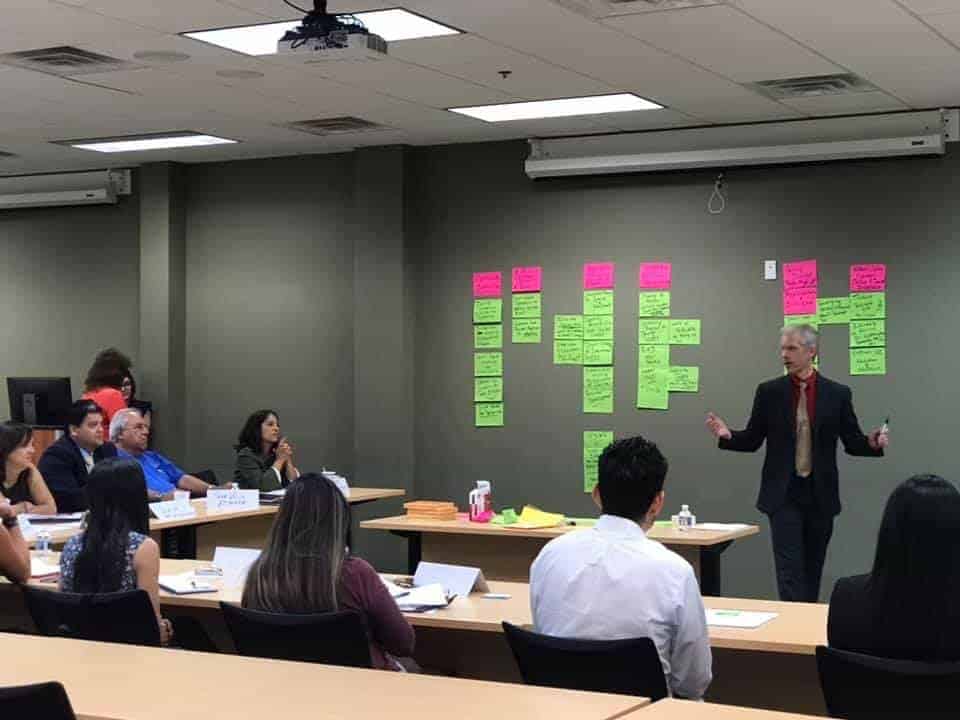
This article was written by Matt Meyer in association with the State Council for Sector Strategies.
“Ensuring that by 2030, 2 million North Carolinians have a high-quality postsecondary degree or credential.” —myFutureNC attainment goal
Lofty goal, yes. Impossible task, no. No one can truly predict the future, but economists, educators, business leaders, and government officials all agree: for North Carolina’s economy to continue to grow and provide the state’s people with well paying career opportunities, North Carolinians must have access to education and training that lead to credentials that are valued and desired by the state’s businesses and industry.
For many of the stakeholders who will be involved in developing strategies to achieve the goal — the staff and faculty at our public schools and higher education institutions, and our workforce and economic development partners — the loftiness of the outcome is difficult to grasp on a local, county, or regional level. Localizing the attainment goal is paramount to success, and this begins with engaging business and industry leaders, local communities, educators, and economic and workforce development partners in a systematic and strategic process.
Education attainment alone can’t help the state move forward and make economic opportunities available to every North Carolinian. Good jobs and careers depend upon the growth and activity of the state’s businesses and industries. If many sectors across the state are not expanding, economic mobility and opportunities will be limited for a great portion of the state’s population.
Additionally, if the skills and competencies being provided by local education and training institutions do not meet the needs of their industry partners, economic activity will stagnate due to challenges with finding talent and upskilling the workforce. Inherent to achieving the state’s education attainment goal and growing the economy is understanding exactly what business and industry needs, and how various education and training providers can play their part in meeting these needs. This is no small feat! After all, one of the key drivers of the attainment goal is the challenge encountered in attempting to align worker education programs with the needs of the local economy.
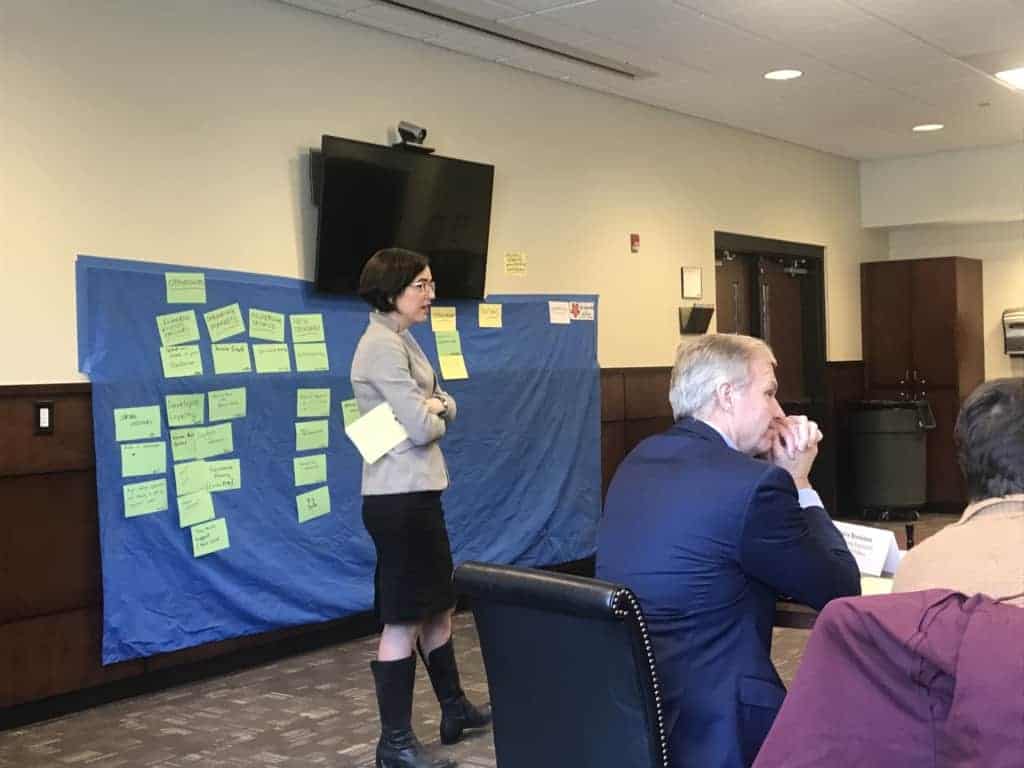
Industry and business ownership
The voices of business and industry are not enough for setting the workforce and education agenda for the state. Setting aside competition and coming together as industry sectors to take ownership of building local talent pipelines is an early step in localizing skills attainment and addressing the upskilling of the state’s workforce. Businesses don’t differentiate between a workforce conversation and a competitiveness conversation — business people see that the two are totally interconnected.
And, getting business professionals to “own” this work ensures that they will be more deeply and effectively engaged in building the talent pipeline they need. In other words, education and training providers are more likely to get it right if business people are working hard to ensure they get it right. Business ownership is a key pillar of any industry sector partnership, and there are successful examples of businesses solving a workforce challenge in North Carolina.
For example, the state’s power and utility companies saw the need for more electric line workers. In 2017, Duke Energy, Pike Electric, and several local electric co-ops came together to discuss their current and future workforce issues in both North and South Carolina. They compared the existing and future electric line worker workforce to the output of existing workforce training programs in the Carolinas. In North Carolina, the effort found gaps in availability and consistency of training programs and identified and implemented new program locations.
As a result, the community college system is working to ensure consistent programming among the colleges in the state and train more line workers. In 2016, four North Carolina community colleges produced fewer than 194 trained workers. As of 2018-19, 10 North Carolina community colleges now offer validated electric line worker programs that will graduate 630 skilled workers in spring of 2020.
The success happened because community college leaders actively listened to industry leaders instead of trying to sell the industry on existing programs or tell the industry what it needed. The energy companies put aside competition and took ownership of the effort by forming the Carolinas Energy Workforce (CEW) Consortium, with the community colleges, ApprenticeshipNC, and local workforce centers and boards as strong partners of the effort.
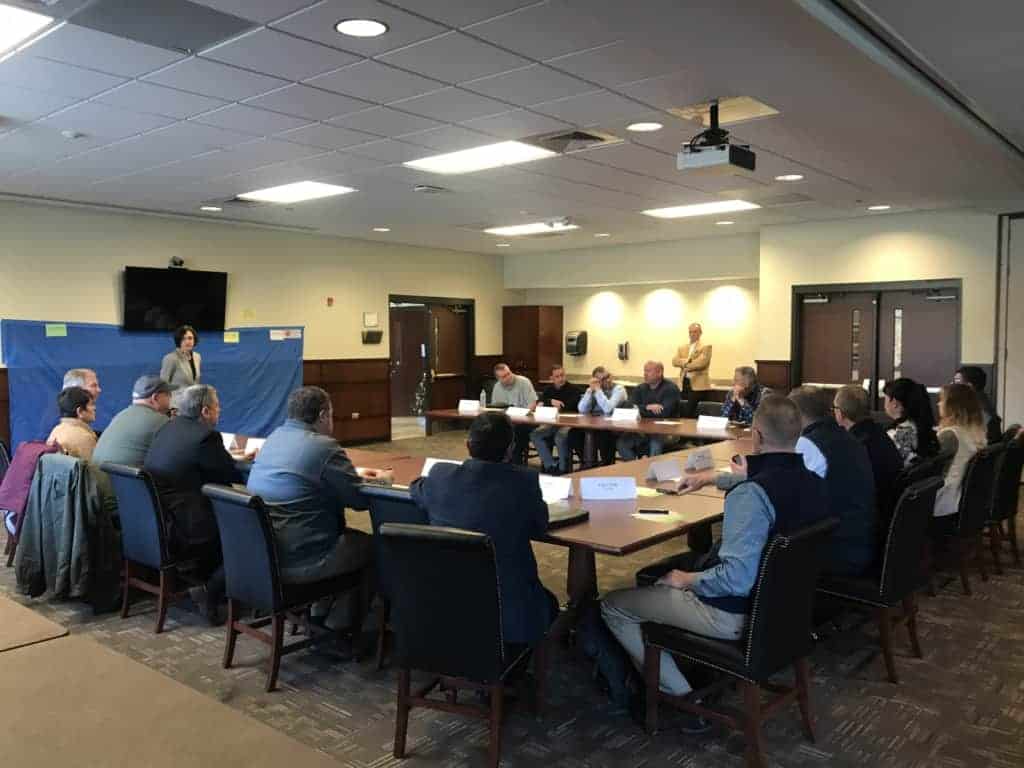
Community public support
This effort succeeded because industry took ownership, and also because the community colleges, workforce boards, and ApprenticeshipNC truly listened to their industry partners. Coordination of public support partners is a vital to the success of any industry sector partnership. However, public support partners such as workforce boards or community colleges may feel threatened that an industry sector partnership is in competition or duplicating their existing efforts. In reality, sector partnerships are a mechanism to enhance and strengthen many existing networks or initiatives.
For example, in the state of Washington, the Healthcare Industry Leadership Table (HILT) formed to bring together Seattle’s diverse healthcare and medical organizations and discuss their greatest challenges. HILT launched after support partners — community college, workforce development organizations, community-based organizations, and others — agreed to take a unified approach in supporting the health care industry, creating a “shared table” where they could all collaborate effectively with health care employers in the region.
HILT has identified a range of actions to address workforce shortages, improve employee recruitment and retention, reduce costs of care, and better coordinate across sub-sectors within health care. Though the HILT is completely driven by the local health care industry, industry members are supported by a coordinated team of regional education, workforce training, economic development and community organizations.
The response from public and private support partners has helped to leverage local resources needed to ensure the industry’s workforce shortages are met and to position the industry to be more successful and sustainable in the long run. This example demonstrates the advantage of sector partnerships and how they will help North Carolina’s education and workforce systems meet the needs of the state’s business and industry.
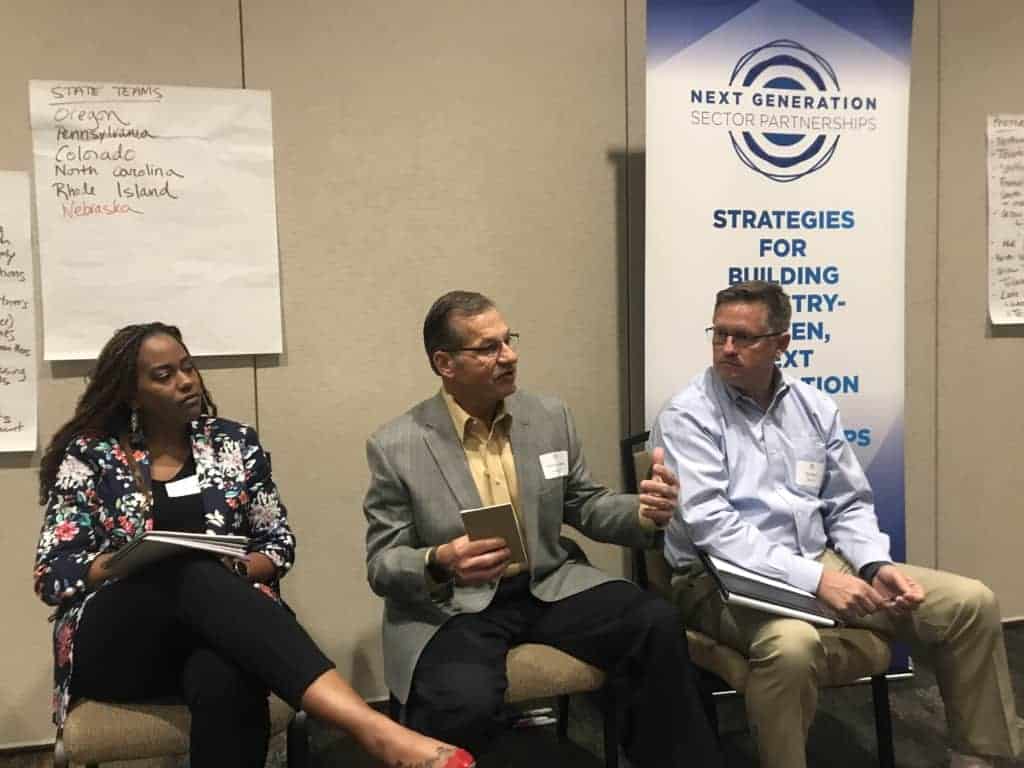
Action steps
How should a county or region move forward to convene an industry sector partnership? Here are recommendations based upon the nationally recognized Next Generation Sector Partnerships model.
Step one: Public support partners coordination and sector identification
Public support partners gather and take stock of their region. These partners may include, but are not limited to, leaders from community colleges, local chambers of commerce, economic development, and workforce boards. The purpose of gathering these support partners is to develop an understanding of which industry sectors are driving the local economy. Also of importance is having the partners come to an agreement on the appropriate industry sector for the first convening. Since sector partnerships depend on a coordinated team of public partners, it is critical that a diverse team is engaged in the early planning stages to ensure it is a truly collaborative effort and that partners buy into a shared approach.
Another vital action for the support partners is to identify a convener. Establishing a convener is a key part of this process, and while a component of the convener’s job is facilitating and finding a meeting venue, the person who steps up to play this role is important to the overall leadership and coordination of the support partners. However, the convener does not own the partnership — rather, he or she is the “point-person” for the coordinated effort. Businesses own the sector partnership, and nothing moves forward without business participation.
Step two: Launch date, location, and invitations
Once the specific industry sector has been determined, the public partners will identify the individuals within their local businesses to invite to the sector partnership launch. These business contacts ideally are those who see the big picture, are collaborative, and have decision-making authority. Locally respected business champions are identified from the industry contact list and asked to sign the launch date invitation letter, demonstrating local business ownership for the launch.
Step three: The launch
The launch is important for creating excitement and identifying industry leadership for the effort. To help facilitate the meeting, it is important to ensure that the room setup accommodates having the industry at the center or front of the room and seating for support partners behind the industry partners. This is not to underplay the importance of the support partners but is instead to ensure that the industry partners are in the front of the room and engaged during the meeting. The support partners’ primary goal during the session is to listen. This is not a meeting to sell programs or demonstrate expertise to the industry partners.
The agenda is kept simple and quickly transitions into a conversation with industry partners about current trends and positive aspects of their industry. This is a way to get the partners warmed up to actively participate and sets a positive tone for the meeting instead of focusing on negative issues or industry challenges.
The facilitator will ask the industry partners, on provided sticky notes or cards, to brainstorm and identify one or two key things they need to occur for their business to thrive into the future and to write their names on the cards.
The facilitator will ask individuals to clarify ideas if needed and will cluster the responses around similar themes. Typically, three or four themes will evolve among a few outliers. The facilitator will validate these themes through agreement of the group and will seek out champions — individuals who are passionate about seeing the theme or item come to fruition. If champions do not rise up, then the facilitator can challenge the group on whether the theme or item is a real priority or not.
The meeting wraps up when the champions are identified and committees of these volunteer champions form to address the priorities.
Step four: Follow-up and quick wins
Quick wins can help further excite and sustain the effort to address more long-term priorities. Many times, work-based learning or marketing and awareness can be addressed successfully and quickly. The quick wins should be celebrated and publicized. This can also have the impact of convincing other industry partners to join the effort.
As the partnership evolves, it is critical that business leaders continue to “own” the agenda, even as they enlist support from public partners in implementing projects and initiatives. Business ownership of the sector partnership is different from business execution of the effort. Passionate public partners play a critical role in supporting businesses’ priorities. That is why it is critical to establish early a diverse group of public partners committed to making a difference in their region.
For example, if developing a training program was the priority of the businesses in the sector partnership, the training providers or community colleges will have a critical role to play in getting the program up and running. If, on the other hand, transportation was identified as the priority, then appropriate public support partners such as local government agencies or economic development organizations may need to step up to partner with business leaders in implementing solutions.
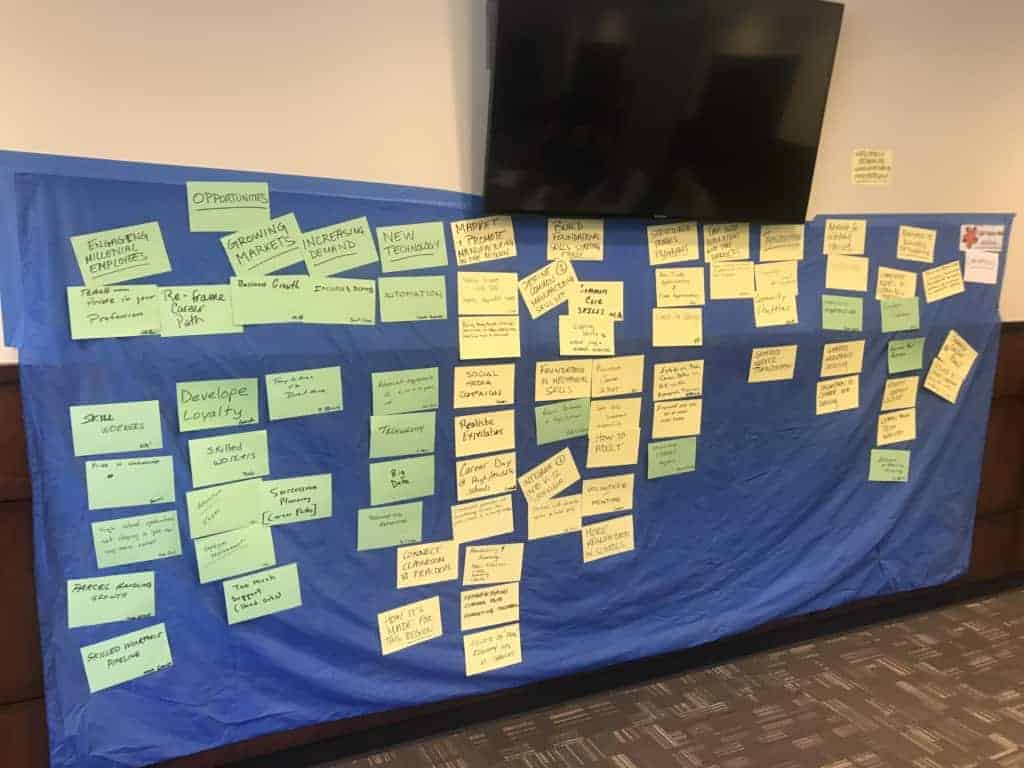
Help is available
Sector partnerships are enjoying success in many states across the country. The state of Colorado has 28 different sector partnerships from health care to advanced manufacturing. These efforts provide many benefits, but ultimately the economic health of businesses and industries is at the heart of every successful partnership.
Local communities in North Carolina wanting to experience similar results should understand that they are not in this alone. Help exists at the state level. In 2019, the NC State Council for Sector Strategies formed with membership from the Governor’s Office, the NC Department of Commerce, the NC Works Commission, the NC Community College System, the Economic Development Partnership of North Carolina, and representation from the state’s network of Workforce Development Board directors. This state-level support team is committed to helping local communities work with their businesses and industries to form successful partnerships and help move North Carolina forward toward achieving many economic and workforce goals, including the myFutureNC education attainment goal.
Currently, three pilot sector partnerships have been initiated and are preparing to launch. These follow the ongoing Healthcare Sector Partnership in Cumberland County that launched in 2018. The State Council is supporting these efforts by providing Next Generation Sector Partnership facilitators to the pilots and training key state-level staff on the facilitation process in order to sustain the effort beyond the three initial pilots.
For more information, please contact one of the members of the NC State Council for Sector Strategy.
NC State Council on Sector Strategy
- Jessica Englert, Workforce Development Policy Advisor, Office of Governor Roy Cooper
- John Loyack, Vice President, Global Business Services, Economic Development Partnership of NC
- Maureen Little, Vice President of Economic Development, NC Community College System
- Matthew Meyer, Associate Vice President of Business Engagement, NC Community College System
- Annie Izod, Executive Director, NCWorks Commission
- Nedra Clayborne Rodriguez, Director, Cumberland County Workforce Development
- Scott Panagrosso, Business Services Support Specialist, NC Department of Commerce
- Jenni Harris, Executive Director of Business Services, NC Department of Commerce
- Mark Edmonds, Chief Operating Officer for Division of Workforce Solutions, NC Department of Commerce
- Linda Cheatham, Assistant Secretary of Workforce Solutions, NC Department of Commerce
- Bob Collins, Executive Director of Strategic Planning, NC Department of Commerce
- Lindsay Johnston, JDIG Economist, NC Department of Commerce
- Elizabeth Crabill, Chief Deputy Secretary, NC Department of Commerce
- Francie Genz, Consultant to Council
Recommended reading



